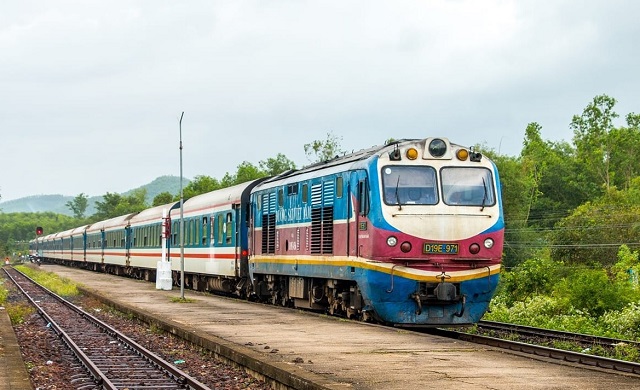Hanoi set to become Vietnam’s major transit hub in 2030 railway planning
Total investment capital for railway development until 2030 is estimated at VND230 trillion (US$10.5 billion).
Hanoi and Ho Chi Minh City are projected to be the main transit hubs in Vietnam’s railway planning for the 2021-2030 period, which targets to build nine new railway routes with a total length of 2,362 kilometers.
| The country would have a network of 25 railway routes with a length of 6,354 kilometers by 2050. Photo: Tran Dung |
The plan was signed off by Deputy Prime Minister Le Van Thanh in decision No.1769/QD-TTg on October 19, with a view to upgrading existing railway tracks and ensuring smooth connection with international rail transport routes for total investment capital of VND240 trillion ($10.5 billion).
The planning also expects to ensure greater efficient capital mobilization for the construction of new railway routes, including the North-South express railway, routes connecting international seaports, airports, and major cities.
By 2030, Vietnam expects the railway network would carry a total freight of 11.8 million tons, or 0.27% of the total, and handle a passenger volume of 460 million, or 4.40%.
The Government targets to update the existing seven existing railway routes with a length of 2,440 kilometers and two priority sections of the North-South express railway in Hanoi – Vinh, and Nha Trang – Ho Chi Minh City.
New railway routes are set to be built to connect the railway with international gateways in Haiphong and Ba Ria – Vung Tau; connecting Ho Chi Minh City with Can Tho and international destinations of China, Laos, and Cambodia.
By 2050, Vietnam would complete the North-South express railway and those starting from Hanoi, Ho Chi Minh City, or connecting between seaports, industrial parks, economic zones.
The country would have a network of 25 railway routes with a length of 6,354 kilometers by 2050.
To realize goals set in the plan, the Government would continue to provide incentive policies for organizations and individuals to invest in the railway transport business, including the utilization of land funds for the development of national railway networks.
The ODA and preferential loans from international donors would be the key in railway projects, while the Government is set to further mobilize domestic and foreign sources for transportation investment by ensuring a fair and healthy competitive environment for all economic components in this field.
Vietnam would strengthen cooperation with international partners, especially countries with the advanced railway industry, along with taking advantage of technologies from Industry 4.0 in the management of railway systems.
The new nine railway routes include: 1/The North-South express railway from Ngoc Hoi station (Hanoi) to Thu Thiem station (1,545 kilometers) 2/Yen Vien – Pha Lai – Ha Long – Cai Lan from Yen Vien station (Hanoi) to Cai Lan station (Quang Ninh Province) (129 kilometers) 3/Ngoc Hoi – Lac Dao – Bac Hong in the east corridor of Hanoi (59 kilometers) 4/Hanoi – Haiphong (102 kilometers), connecting Haiphong port with seaports of Dinh Vu, Nam Do Son, and Lach Huyen 5/Vung Anh – Tan Ap – Mu Gia from Vung Ang port (Ha Tinh) to Vietnam – Lao border (103 kilometers) 6/Bien Hoa – Vung Tau from Trang Bom station to Vung Tau station (84 kilometers) 7/Ho Chi Minh City – Cantho from An Binh station to Cai Rang station (174 kilometers) 8/Ho Chi Minh City – Loc Ninh from Di An station to Hoa Lu border gate at Vietnam – Cambodia border (128 kilometers) 9/Thu Thiem – Long Thanh from Thu Thiem station (Ho Chi Minh City) to Long Thanh International Airport (38 kilometers) |











